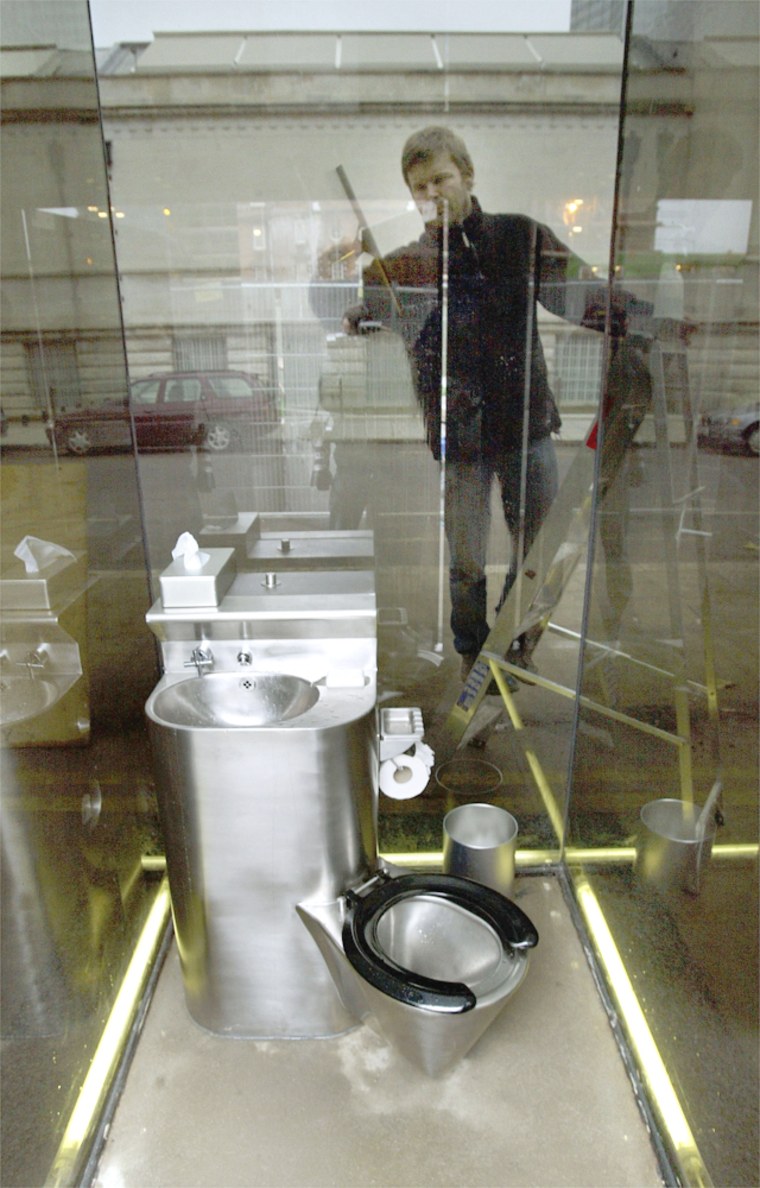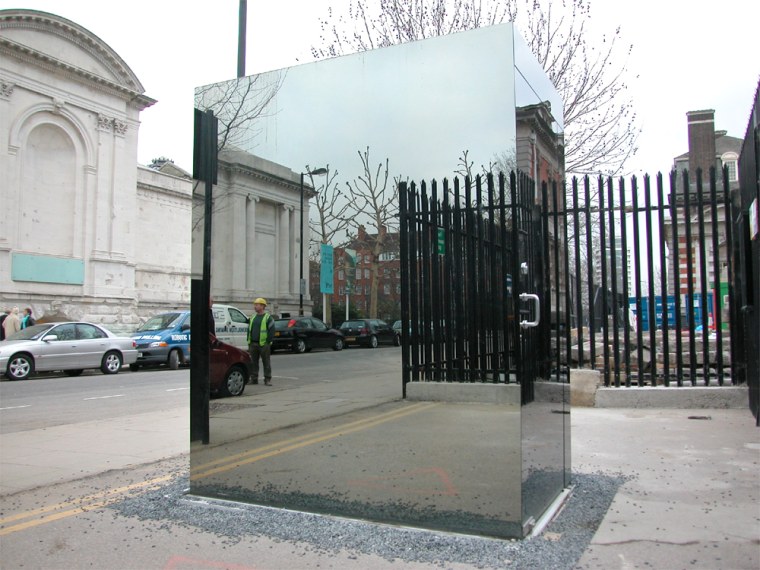Visitors to Britain will find a new stop on London’s site-seeing route this spring: a usable public toilet enclosed in one-way mirrored glass situated on a sidewalk near the River Thames. The contemporary art exhibit, which allows the user to see out while passers-by cannot peep in, toys with the concepts of privacy and voyeurism.
“I think there’d be a twinge of not believing that people outside couldn’t see you,” said Jeff Boloten, as he peered into the glass cube to see the metal prison toilet and its transparent walls.
The exhibit, entitled "Don’t Miss A Sec," is on display at a construction site across the road from Tate Britain, the national gallery of British art from 1500 to the present.
As museum-goers inquisitively press their noses to the reflective glass, and construction workers mill about, it isn't difficult to see why people would feel uneasy about using the glass outhouse.
“Playing with the idea of the most private bodily function and having to sit on a street corner is just bizarre,” said Boloten, who works at the Tate Britain.
“The construction site makes it interesting because portable toilets are at construction sites all the time, but, the Tate Britain’s a respected institution; the juxtaposition makes it more unique,” he said.
Far from testing the viewers’ levels of embarrassment versus exhibitionism, the artist, Italian-born Monica Bonvicini, conceived of the idea while watching people at art openings. Amid the gossip and pageantry, nobody wanted to leave the room for fear of missing a key entrance or comment. The "Don’t Miss A Sec" exhibit -- which was unveiled in December -- reflects peoples’ reluctance to leave the spectacle, and allows the art-goer to remain in the action, even while on the toilet.
While some viewers meditate on the exhibit’s psychological and cultural implications others revert to telling potty jokes.
British dailies and art commentaries have also had fun with the subject: “Loo with a view” and “Bathroom humor in London” have been among the headlines.
Panoptican surveillance system
The use of the sterile prison toilet and sink unit stems from the fact that the site once housed the Millbank Penitentiary, where prisoners were held before being transported to Australia in the 1800s.

The prison's architect Jeremy Bentham had hoped to create a Panoptican, or all-seeing, surveillance system for the penitentiary.
His design envisioned a cylindrical central tower, from where a guard could see all the prisoners in their cells, which radiated out from the tower, without being seen himself.
Bentham believed that the knowledge that they were being watched would prevent prisoners from being disobedient, and that they would come to internalize the watchful eye and be able to act as their own guards if they were eventually released.
Although Bentham’s Panoptican was never realized, 21st century surveillance systems, like closed circuit television (CCTV), have taken on a similar role.
"Don’t Miss a Sec" turns the tables by taking the all-seeing power away from the camera and giving it to the person on the toilet, while letting them remain invisible to the world.
But peoples' fears of being seen with their pants down still hold strong.
In 2000, a pair of self-proclaimed performance artists caused an uproar when they relieved themselves on artist Marcel Duchamp's 1917 sculpture of a urinal, on display at London's Tate Modern gallery.
But, even with full permission to defecate on Bonvicini's work of art, Britons and tourists alike tend to shy away from the challenge.
Considering that four-man outdoor urinals are a frequent site in the U.K. capital, some may question the need for nerves. And in some cultures using the toilet is not considered a private matter at all. In fact, it was common for ancient Greek aristocrats to discuss political and business affairs while attending to their own "personal business" in communal bathrooms.
Whatever one's take on toilet etiquette, visitors "Don't Miss A Sec" while viewing, or using, this exhibit.
